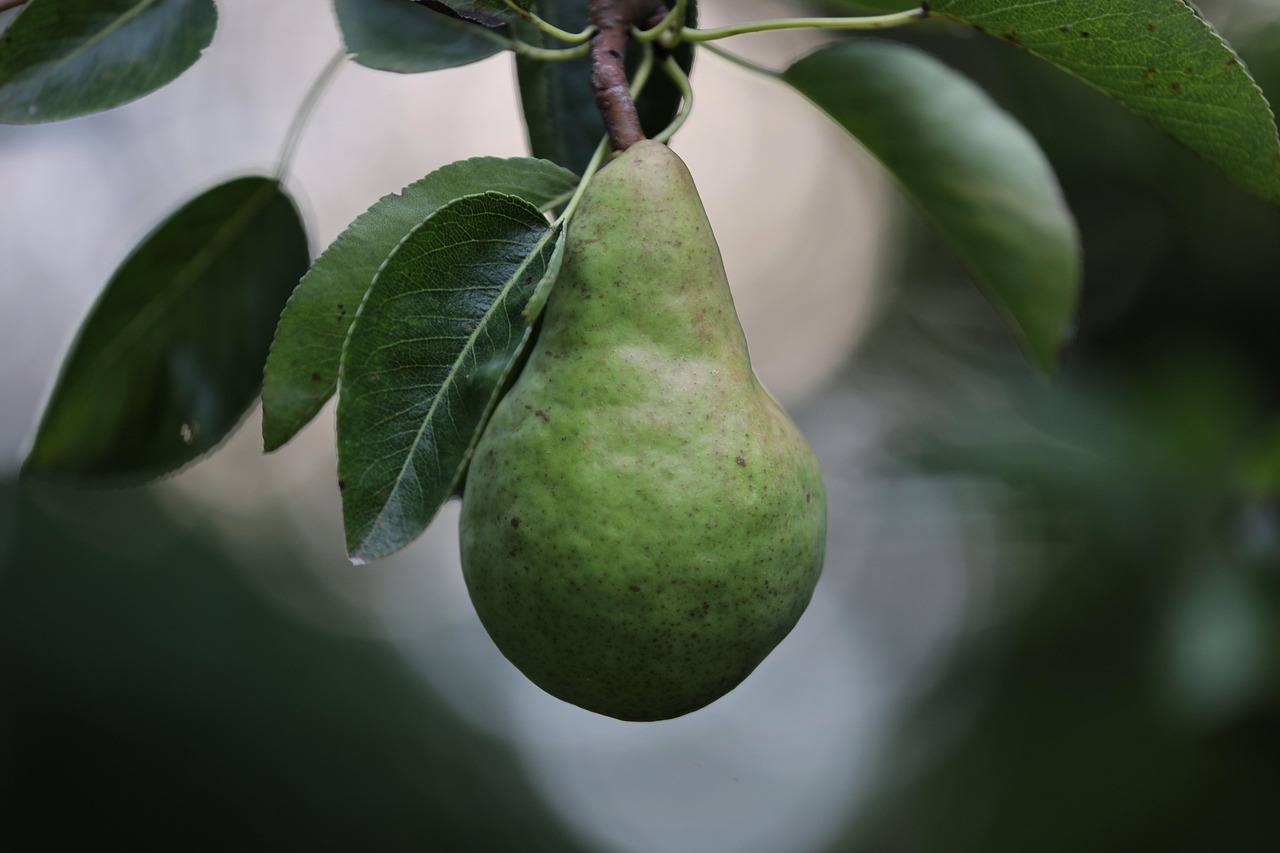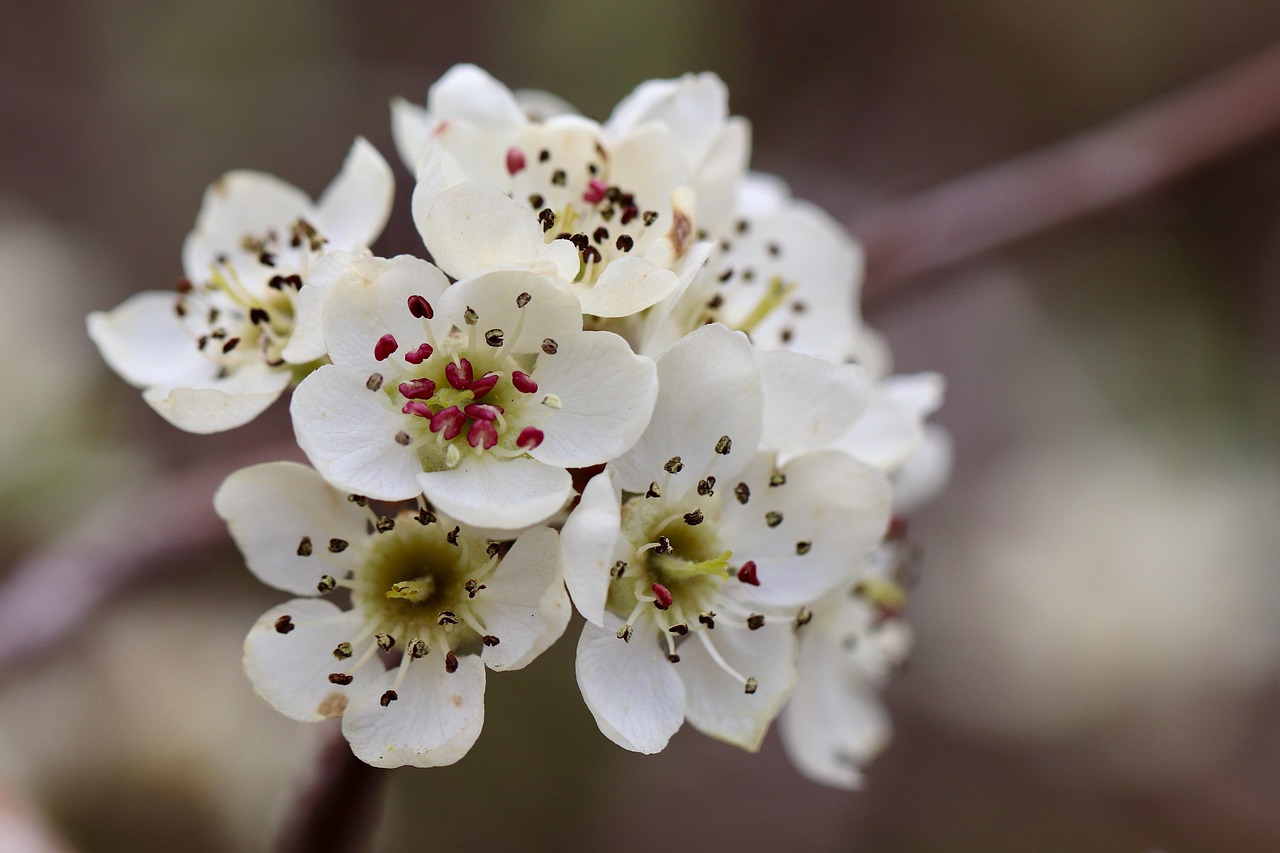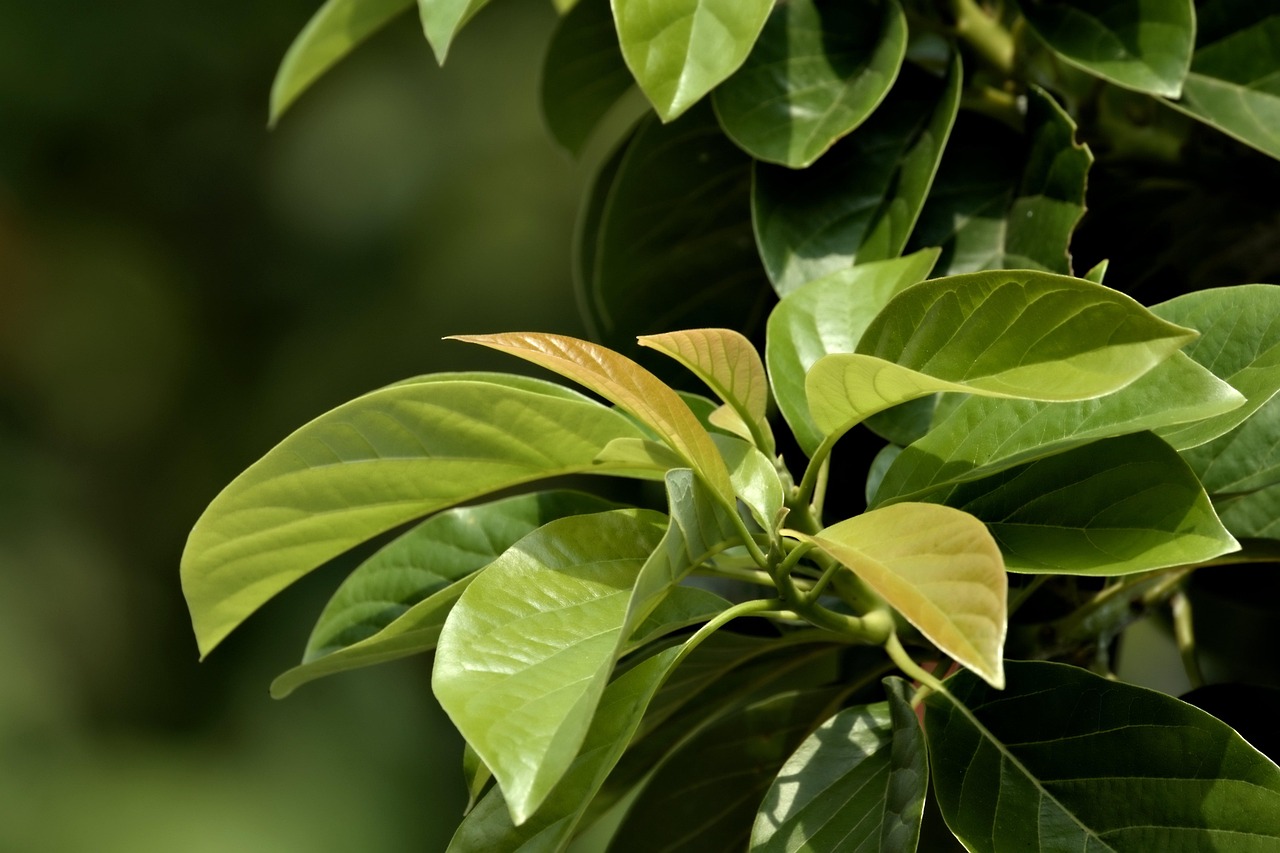Pear trees generally grow at a moderate rate, averaging about 12 to 24 inches per year in optimal conditions. Factors like soil quality, climate, and care practices can significantly influence their growth rates.
Pear Tree Growth Rate Overview
Pear trees are a popular choice for home gardens due to their delicious fruit and beautiful blossoms. Understanding their growth rate is essential for gardeners planning to plant these trees. The growth rate can vary based on several factors including the pear tree variety, soil conditions, and local climate. Knowing what to expect can help gardeners provide the best care possible.

Typically, pear trees can be categorized into two main types: European and Asian. Each type has its own growth characteristics and preferred growing conditions. European pear trees tend to grow larger and require more space than their Asian counterparts. This distinction is important for gardeners when considering planting space and tree management.
Factors Influencing Growth Rate
Several factors can affect how quickly a pear tree grows. Here are some of the most significant:
- Soil Quality: Pear trees thrive in well-drained, fertile soil. Nutrient-rich soil supports faster growth.
- Watering: Consistent watering, especially during dry spells, is crucial for healthy growth.
- Sunlight: These trees prefer full sun, receiving at least six hours of sunlight each day.
- Temperature: Pear trees flourish in temperate climates with distinct seasons, including a cold winter period.
- Pest Control: Keeping pests at bay reduces stress on the tree, allowing it to grow more vigorously.
Growth Stages of Pear Trees
Pear trees go through several distinct growth stages from planting to maturity. Understanding these stages can help gardeners manage their trees effectively:

| Growth Stage | Description | Time Frame |
|---|---|---|
| Planting | The initial stage where the tree is planted in the garden. | Year 0 |
| Juvenile Growth | The tree focuses on root establishment and initial height growth. | Year 1-3 |
| Mature Growth | The tree begins producing flowers and fruit, growing more vigorously. | Year 4-8 |
| Full Production | The tree reaches its maximum height and produces fruit regularly. | Year 9 and beyond |
During the juvenile growth stage, a pear tree may only grow a few feet. Regular pruning during this stage can encourage upward growth and enhance fruit production later on. As the tree matures, its growth rate will increase significantly, often leading to annual height increases of two feet or more in ideal conditions.
Choosing the Right Variety
Selecting the right variety of pear tree can also influence growth rates. Some popular varieties include:
- Bartlett: Known for its sweet fruit and fast growth rate.
- Asian Pear: Typically grows faster than European varieties and adapts well to different climates.
- Seckel: A smaller tree that grows slower but produces high-quality fruit.
The choice of variety should align with your local climate and gardening goals. Researching local conditions can aid in making the best selection for your home garden.

Proper care during the early years pays off tremendously as the tree matures. Regular pruning, fertilization, and pest management are essential practices for encouraging rapid growth and ensuring long-term health of your pear trees.
Optimal Growing Conditions for Pear Trees
To maximize the growth rate of pear trees in home gardens, it is essential to create optimal growing conditions. These conditions include proper sunlight exposure, soil quality, irrigation practices, and climate considerations. By understanding these factors, gardeners can enhance the overall health and productivity of their pear trees.
Sunlight Requirements
Pear trees flourish in full sun, which means they need at least six to eight hours of direct sunlight each day. Insufficient sunlight can lead to slow growth and poor fruit production. When selecting a planting location, consider the following:
- Avoid Shade: Ensure that nearby structures or larger trees do not cast shade on the pear tree.
- East or South Facing: Planting on an east or south-facing slope can provide maximum sunlight exposure.
- Open Space: Choose an area with ample open space for sunlight to reach the tree from all angles.
Soil Quality and Composition
The type of soil plays a vital role in the growth rate of pear trees. Here are some key points regarding soil quality:

- Well-Drained Soil: Pear trees prefer soil that drains well to avoid waterlogging, which can lead to root rot.
- Soil pH: Aim for a pH level between 6.0 and 7.5. Conduct a soil test to determine acidity levels and adjust as needed.
- Nutrient-Rich: Incorporate organic matter such as compost to improve soil fertility and structure.
Irrigation Practices
Proper watering is crucial during the early years of growth. Here are some guidelines for effective irrigation:
- Deep Watering: Water deeply but infrequently to encourage deep root growth.
- Mulching: Apply mulch around the base of the tree to retain moisture and suppress weeds.
- Monitor Conditions: Adjust watering frequency based on rainfall and temperature. During dry spells, increase watering frequency.
Fertilization for Healthy Growth
Regular fertilization supports healthy growth and fruit production in pear trees. The right nutrients can encourage robust development and enhance the tree’s resistance to pests and diseases. Here are some tips for fertilizing pear trees:
- Timing: Fertilize in early spring before new growth begins and again in late summer if needed.
- Type of Fertilizer: Use a balanced fertilizer with equal parts nitrogen, phosphorus, and potassium (N-P-K) or an organic option such as compost or well-rotted manure.
- Application: Follow the manufacturer’s instructions for application rates to avoid over-fertilization, which can harm the tree.
Pest and Disease Management
Pear trees are susceptible to various pests and diseases that can affect their growth rate. Being proactive in pest management can prevent significant issues. Common pests include:
- Pear Psylla: A small insect that can weaken trees by feeding on their sap.
- Codling Moth: This pest can damage fruit, leading to premature drop or decay.
- Aphids: Small insects that can stunt growth by feeding on new shoots.
To manage these pests effectively:
- Regular Monitoring: Check your trees frequently for signs of pests or disease.
- Natural Predators: Encourage beneficial insects like ladybugs that feed on aphids.
- Pesticides: If necessary, use organic pesticides as a last resort, following application guidelines carefully.
Disease Prevention Strategies
Diseases can hinder the growth of pear trees, so taking preventive measures is essential. Common diseases include:
- Bacterial Fireblight: A serious bacterial disease that can kill branches if not managed promptly.
- Powdery Mildew: A fungal disease that appears as white powder on leaves, reducing photosynthesis efficiency.
To prevent these diseases:
- Pruning: Regularly prune to improve air circulation within the tree canopy.
- Cultural Practices: Avoid overhead watering to minimize leaf wetness that fosters fungal growth.
- Disease-Resistant Varieties: When selecting trees, consider those bred for resistance to common diseases.
By establishing optimal growing conditions, gardeners can ensure their pear trees thrive and achieve their maximum potential growth rates. Proper care, including appropriate sunlight, soil management, effective irrigation, fertilization, and pest control practices, will lead to a healthy and productive garden.
Pruning Techniques for Pear Trees
Pruning is an essential practice for promoting healthy growth in pear trees. It helps shape the tree, improve air circulation, and encourages better fruit production. Understanding the right techniques and timing for pruning can significantly influence the growth rate and overall health of the tree.
When to Prune Pear Trees
The best time to prune pear trees is during their dormant season, typically in late winter or early spring, before new growth begins. Pruning during this period reduces stress on the tree and minimizes sap loss. Here are some key points regarding the timing of pruning:
- Late Winter: Pruning in late winter allows you to see the tree structure clearly without leaves obstructing your view.
- Early Spring: If late winter is not feasible, early spring just before bud break is also acceptable.
- Avoid Late Summer: Pruning in late summer can stimulate new growth that may not harden before winter, increasing the risk of damage.
Types of Pruning Cuts
Understanding the different types of pruning cuts can enhance your effectiveness. Here are the main types of cuts you will use:
- Heading Cuts: This involves cutting back a branch to a bud, encouraging bushier growth and more branching.
- Thinning Cuts: Thinning cuts remove entire branches at their point of origin, which improves air circulation and light penetration.
- Pinching: A technique used on young shoots to encourage bushier growth by removing the tip of the shoot.
Steps for Pruning Pear Trees
Here’s a step-by-step guide to effectively prune your pear trees:
- Gather Tools: Use sharp, clean pruning shears, loppers, and saws. Disinfect tools to prevent disease transmission.
- Assess the Tree: Look for dead, damaged, or diseased branches. Identify branches that cross or rub against each other.
- Remove Dead or Diseased Wood: Start with dead or diseased branches to prevent any further spread of disease.
- Thin Out Crowded Branches: Remove branches that are too close together to improve air circulation and light exposure.
- Shape the Tree: Aim for an open center structure to allow light to reach all parts of the tree.
- Finish with Good Practices: Clean up any debris around the base of the tree after pruning.
Training Young Pear Trees
Training young pear trees helps establish a strong framework that supports healthy growth and fruit production in later years. There are several training methods that gardeners can employ, including:
Candlewood Training
This method encourages strong central leaders and lateral branches. Follow these steps:
- Select a Leader: Choose a central stem to be the main leader of the tree.
- Encourage Lateral Branches: Allow several lateral branches to develop at even intervals along the leader.
- Support Growth: Use stakes or ties to support any branches that need help staying upright.
Open Center Training
This method creates a vase-like shape that allows sunlight to penetrate effectively. Here’s how to do it:
- Select Multiple Leaders: Choose two or three strong branches to serve as main leaders.
- Remove Competing Growth: Cut back any competing branches to promote a clear central opening.
- Encourage Growth Outward: Trim back inward-growing branches to maintain an open center.
Watering Techniques for Young Pear Trees
Proper watering practices significantly impact the growth rate of young pear trees. Newly planted trees require consistent moisture while establishing their root systems. Here are some effective watering techniques:
Irrigation Methods
Select an appropriate irrigation method based on your garden’s layout and available resources:
- Drip Irrigation: Provides a slow and steady supply of water directly to the root zone, reducing waste.
- Soaker Hoses: Lay soaker hoses around the base of the tree for even moisture distribution.
- Manual Watering: If using a hose or watering can, ensure you water deeply but infrequently to encourage root depth.
Signs of Underwatering or Overwatering
Monitoring your pear trees for signs of watering issues is crucial. Here are some indicators:
- Underwatering Signs: Wilting leaves, dry soil, and premature leaf drop.
- Overwatering Signs: Yellowing leaves, root rot, and stunted growth.
The right combination of pruning techniques, training methods, and watering practices will support healthy growth and maximize the productivity of pear trees in home gardens.
Common Challenges in Growing Pear Trees
While pear trees can thrive in home gardens, they are not without challenges. Gardeners may encounter several issues that can affect growth rates and overall tree health. Understanding these challenges is essential for effective management.
Pest Infestations
Pests can significantly hinder the growth of pear trees. Common pests include:
- Pear Psylla: These small insects can weaken trees by sucking sap and transmitting diseases.
- Codling Moth: This pest lays its eggs in pears, leading to wormy fruit that drops prematurely.
- Aphids: They feed on new growth, causing leaves to curl and distort.
Regular monitoring and integrated pest management practices are important to keep these pests under control. Strategies may include introducing beneficial insects, using organic pesticides, or employing physical barriers like row covers.
Disease Management
As previously noted, pear trees are susceptible to various diseases. In addition to fire blight and powdery mildew, other diseases can affect growth and yield:
- Scab: A fungal disease that can cause dark spots on leaves and fruit, leading to reduced quality.
- Root Rot: Caused by poor drainage, this disease can kill the tree if not addressed quickly.
Preventative measures, such as ensuring good air circulation and proper watering practices, can help manage these diseases effectively. Regularly inspecting trees for symptoms and treating issues early will minimize long-term damage.
Environmental Factors
Environmental conditions can also impact the growth rate of pear trees. Factors such as extreme temperatures, wind exposure, and soil erosion can create challenges. Here are a few considerations:
- Frost Damage: Late spring frosts can damage blossoms and reduce fruit yield. Consider planting in locations less prone to frost.
- Wind Protection: Strong winds can break branches or desiccate leaves. Planting windbreaks or using physical barriers can mitigate this risk.
- Soil Erosion: Erosion can deplete nutrients from the soil. Using mulch and ground cover plants can help protect the soil structure.
Harvesting Pears
Knowing when and how to harvest pears is crucial for ensuring the best flavor and quality. Pears are unique in that they ripen best off the tree. Here are key points to consider for harvesting:
When to Harvest
Pears should be harvested when they are mature but still firm. Signs of maturity include:
- Color Change: The skin changes color from green to a more yellow hue, depending on the variety.
- Ease of Picking: Pears should come off the tree easily with a gentle twist.
- Seed Color: Check the seeds inside the fruit; they should turn from white to dark brown when ripe.
Post-Harvest Ripening
After harvesting, pears should be placed in a cool location to ripen. Here are some tips for ripening:
- Room Temperature: Allow pears to ripen at room temperature for a few days until they become soft.
- Avoid Refrigeration Initially: Cold temperatures can inhibit ripening; refrigerate only after they have ripened to your liking.
Conclusion
Growing pear trees in home gardens can be a rewarding experience that yields delicious fruit and enhances the beauty of your landscape. Understanding the growth rates, optimal conditions, and care practices discussed throughout this article is essential for successful cultivation. From selecting the right variety to managing pests and diseases, every aspect plays a role in achieving healthy trees and abundant harvests.
By implementing appropriate pruning techniques, watering practices, and environmental management strategies, gardeners can ensure their pear trees thrive. The effort put into caring for these trees will pay off not only in terms of fruit production but also in the joy of nurturing living plants in the garden.
Ultimately, growing pear trees is a journey that requires patience and dedication. With the right knowledge and practices, anyone can enjoy the fruits of their labor—literally! So get started today, and watch your pear trees flourish!
